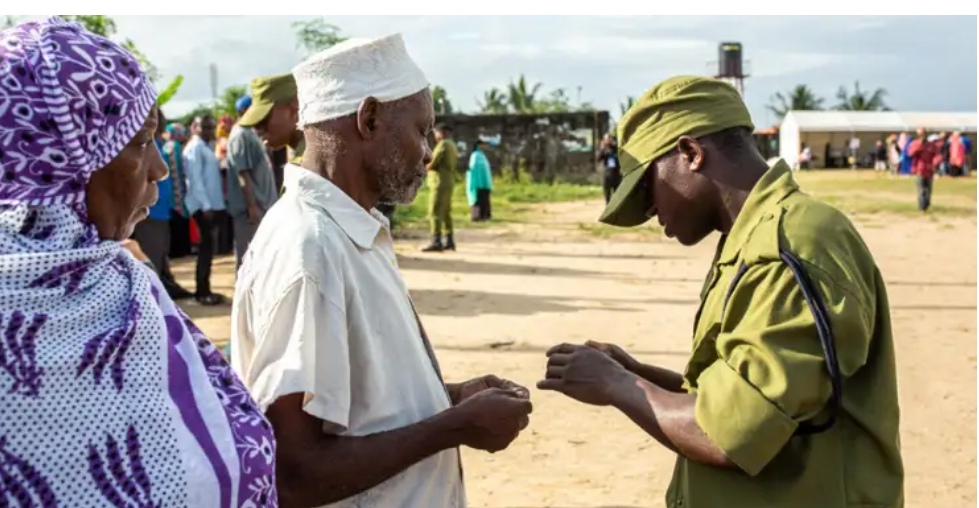TANZANIA’S 2025 GENERAL ELECTIONDOMINANCE, DEMOCRACY CHALLENGES, AND WHAT VOTERS NEED TO KNOW
On Wednesday, October 29, 2025, Tanzanians heads to the polls in a crucial election encompassing the presidency, parliamentary seats, local ward representatives, and key elections in the semi-autonomous region of Zanzibar.

This is an in-depth overview of the 2025 Tanzanian election, the political background, key players, electoral process, controversies, and its implications.
Background and Political Context
Tanzania has been dominated politically by the ruling party, Chama Cha Mapinduzi (CCM), since its formation in 1977.
CCM is deeply rooted in Tanzania’s independence movement and maintains a strong political presence nationwide.
This election marks the first time incumbent President Samia Suluhu Hassan has sought a direct popular mandate after assuming office in 2021 upon the death of former President John Magufuli.
While CCM remains dominant, elections have been marked by growing dissatisfaction with authoritarian tendencies, restrictions on opposition, and limited political pluralism.
Reforms to the electoral laws introduced in 2024 aimed to improve transparency, but critics argue they have not eliminated government influence over electoral bodies or leveled the playing field for opposition parties .
Candidates and Opposition Challenges
The president is elected by plurality voting, where the candidate with the most votes wins. The 2025 presidential race includes 17 candidates, with President Samia Suluhu Hassan representing CCM.
However, the two main opposition parties, Chadema and ACT-Wazalendo, faced severe setbacks, Chadema’s leader Tundu Lissu was arrested and barred from contesting following charges of treason, which he denies.
ACT-Wazalendo’s candidate faced disqualification amid controversy over nomination procedures.
This has led to a race without the significant opposition challenge that characterized previous elections.
Smaller party candidates and independents fill the ballot but have limited influence against CCM’s overwhelming dominance.
Election Day and Process
On election day, voters chose The President of Tanzania, 264 Members of the National Assembly, Over 4,500 ward councillors countrywide, The President and 76 members of Zanzibar’s House of Representatives.
Approximately 37.6 million voters were registered, with a near-equal gender split. Regional and international election monitors were present to observe the process.
While preparations emphasized order and transparency, numerous observers noted a constrained political environment.
Some opposition figures called the election a mere formality, as CCM was widely expected to secure a landslide victory.
Controversies and Criticism
This election cycle has drawn criticism domestically and internationally for the exclusion of major opposition parties and the suppression of dissent.
Arrests of opposition leaders, disqualification of candidates, and restrictions on political rallies have raised concerns about the state of democracy in Tanzania.
Human rights organizations, including Amnesty International, accused the government of stifling opposition voices, claims the government denies.
Despite this, CCM’s tight political control appears to endure, and it is described by some analysts as a hegemonic party intent on maintaining its dominant position in Tanzanian politics.
Zanzibar’s Unique Political Landscape
In Zanzibar, elections often differ significantly from the mainland. Zanzibar has a semi-autonomous government with its own president and House of Representatives.
The 2025 Zanzibar election remains highly competitive compared to the mainland political landscape, with genuine multiparty contestation remaining more vibrant.
Zanzibar’s political dynamics represent a microcosm of the broader challenge Tanzania faces in balancing stability and democratic contestation.
What Is At Stake?
For voters and observers, this election underscores the ongoing tension between political stability and democratic development in Tanzania.
Samia Suluhu Hassan’s administration promises continuity, economic progress, youth employment, and industrialization aligned with Vision 2050.
However, the suppression of major opposition voices and restrictions on political freedoms cast doubt on the election’s competitiveness and legitimacy.
Many question whether Tanzania can nurture a more inclusive democracy in future electoral cycles amid growing digital and social pressures on political discourse.
Looking Ahead
The official results are expected within three days after election day. CCM’s broad dominance makes a change of government unlikely for now.
However, Tanzania’s evolving political landscape and social demands may shape future elections differently.
For now, the 2025 election serves as a reaffirmation of CCM’s long-standing rule but also as a prompt for reflection on Tanzania’s political pluralism, electoral fairness, and road to deeper democratic governance .
